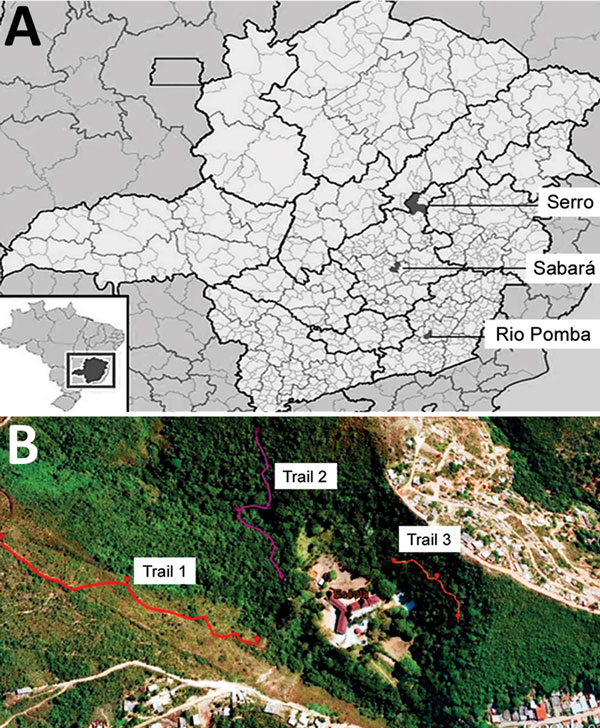Volume 23, Number 6—June 2017
Research
Serologic and Molecular Evidence of Vaccinia Virus Circulation among Small Mammals from Different Biomes, Brazil
Figure 1

Figure 1. Locations of study areas, Minas Gerais state, Brazil. A) Locations of the 3 municipalities where collections were performed: Sabará, Serro, and Rio Pomba. Inset shows location of Minas Gerais state in southeastern Brazil. B) Identification of 3 sample transects in Sabará. Trail 1 has savannah vegetation, and trails 2 and 3 have Atlantic Forest vegetation. Sources: panel A, Scribble Maps; panel B, T.M.F. de Ázara.
Page created: May 16, 2017
Page updated: May 16, 2017
Page reviewed: May 16, 2017
The conclusions, findings, and opinions expressed by authors contributing to this journal do not necessarily reflect the official position of the U.S. Department of Health and Human Services, the Public Health Service, the Centers for Disease Control and Prevention, or the authors' affiliated institutions. Use of trade names is for identification only and does not imply endorsement by any of the groups named above.